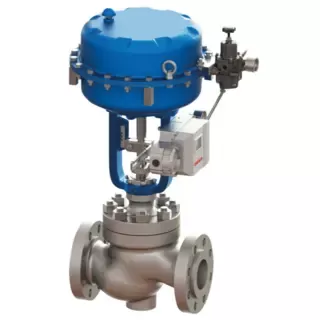Notifications

5 minutes, 4 seconds
-29 Views 0 Comments 0 Likes 0 Reviews

Control valves are essential in industrial fluid systems, regulating flow, pressure, and temperature to ensure operational efficiency, safety, and product quality. A crucial aspect of valve performance lies in the trim design—specifically whether the China Control Valve uses an unbalanced or balanced trim. This choice profoundly affects actuator sizing, valve longevity, and suitability for various applications.
This article explains the differences between unbalanced and balanced trim valves, explores their pros and cons, and provides guidance on selecting the appropriate trim and materials for corrosion and erosion resistance.
Valve trim refers to the internal, wetted, and serviceable components of a control valve that directly contact process fluid. These parts regulate flow and sealing and include:
Stem: Transfers actuator motion to the plug or disc
Seat: Provides the sealing surface for shutoff
Disc or Plug: Adjusts flow by changing position
Back Rings: Support and align moving parts
Guide Bushings: Ensure proper component alignment
Packaging (Seals): Prevent leakage around the stem
Note: Valve bodies and bonnets are in contact with the fluid but are not considered trim since they are permanent structures, not replaceable parts.
Selecting the correct trim design and materials is vital to valve performance, durability, and maintenance needs, especially under varying pressures, temperatures, and fluid conditions.
| Design | Description | Application Highlights |
|---|---|---|
| Unbalanced | Solid plug design, full ΔP force on plug | Precise flow control, ideal for low-pressure use |
| Balanced | Pressure-equalizing features (e.g., balance holes) | Efficient in high-pressure systems, reduces actuator size and seat wear |
How They Work:
The plug receives the full differential pressure (ΔP), creating a force proportional to pressure times plug area (F = P × A). This force must be overcome by the actuator, often requiring larger actuators in high-pressure systems.
Common Types:
Single-seated globe valves (most common)
Some double-seated valves (partially balanced)
Advantages:
Superior precision and control sensitivity
Simple, robust construction with fewer parts
Lower initial cost
Reduced cavitation risk
Disadvantages:
High actuator force requirements
Limited suitability for very high-pressure drops
How They Work:
Balance holes or other pressure equalizing features reduce net force on the plug by allowing pressure to act on both sides, significantly decreasing actuator effort.
Common Types:
Cage-guided control valves
Balanced-plug globe valves
Some rotary valves
Advantages:
Smaller, more cost-effective actuators needed
Handles large pressure drops efficiently
Reduces seat wear and extends valve life
Less vibration and noise
Disadvantages:
More complex design and maintenance
Higher initial cost
Potential leakage through balance holes (requires precision manufacturing)
Selecting the right trim material is crucial for durability:
| Condition | Recommended Materials |
|---|---|
| General water/steam | Stainless Steel (SS316) |
| Highly corrosive fluids | Hastelloy, Monel |
| Abrasive slurries | Stellite, Tungsten Carbide |
| High-temperature steam | Inconel |
| Feature | Unbalanced Trim | Balanced Trim |
|---|---|---|
| Actuator Force Required | High | Low |
| Cost | Lower | Higher |
| Complexity | Simple | More Complex |
| Best For | Precision control, low ΔP | High-pressure, large ΔP |
| Cavitation Resistance | Better | Moderate |
| Maintenance | Easier | More involved |
Choosing between unbalanced and balanced trim depends on:
Pressure conditions: High ΔP favors balanced trim
Actuator sizing and cost constraints
Control precision needs: Unbalanced trim offers finer control
Budget considerations
Additionally, selecting trim materials compatible with process fluids and conditions is essential for long-term reliability.
Understanding these differences enables engineers to specify the most efficient, durable, and cost-effective control valves tailored to their process needs. Whether prioritizing precise flow control with unbalanced trim or demanding high-pressure stability with balanced trim, making the right choice enhances system performance and reduces operational costs.Know more about Google SEO Directory

